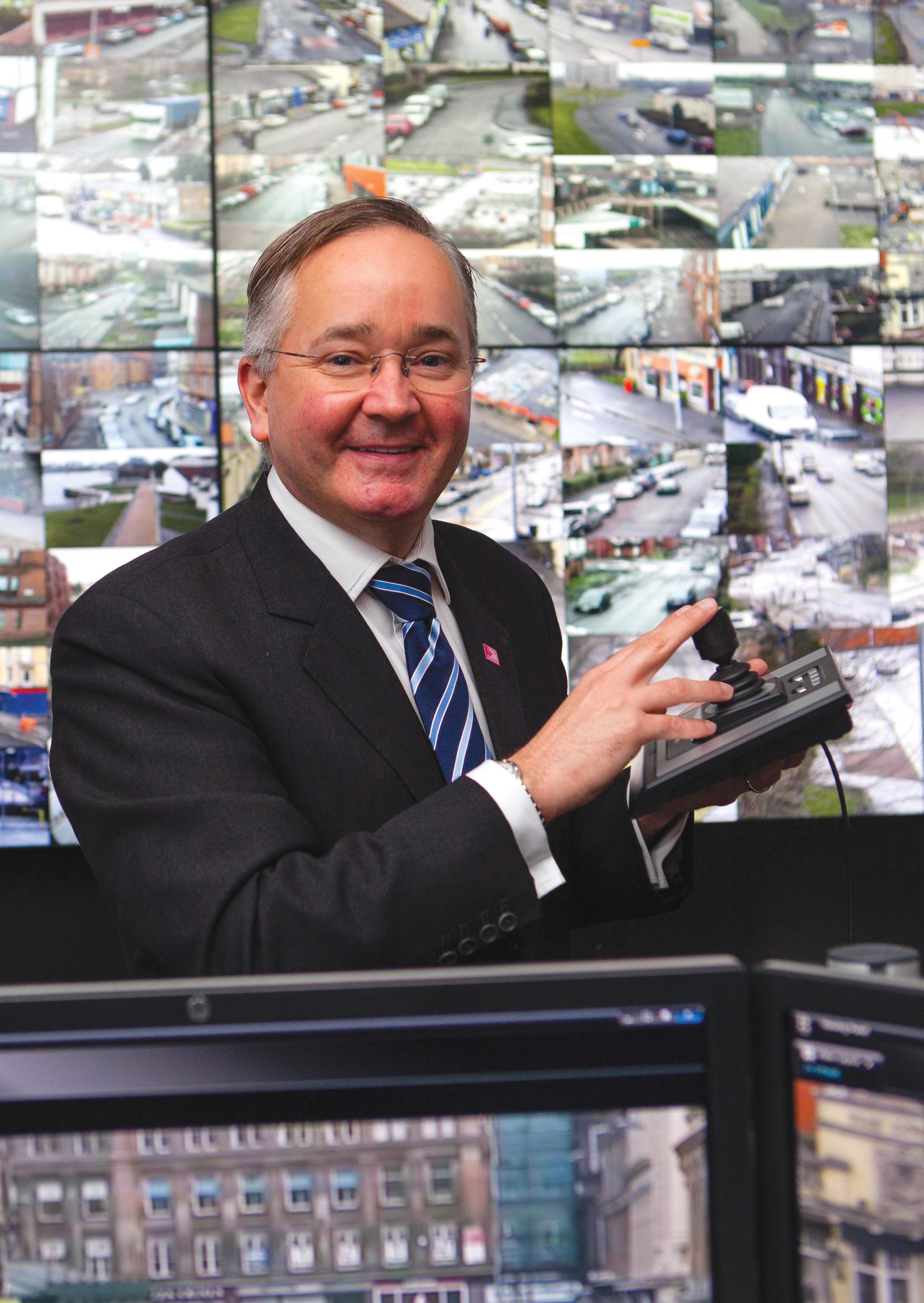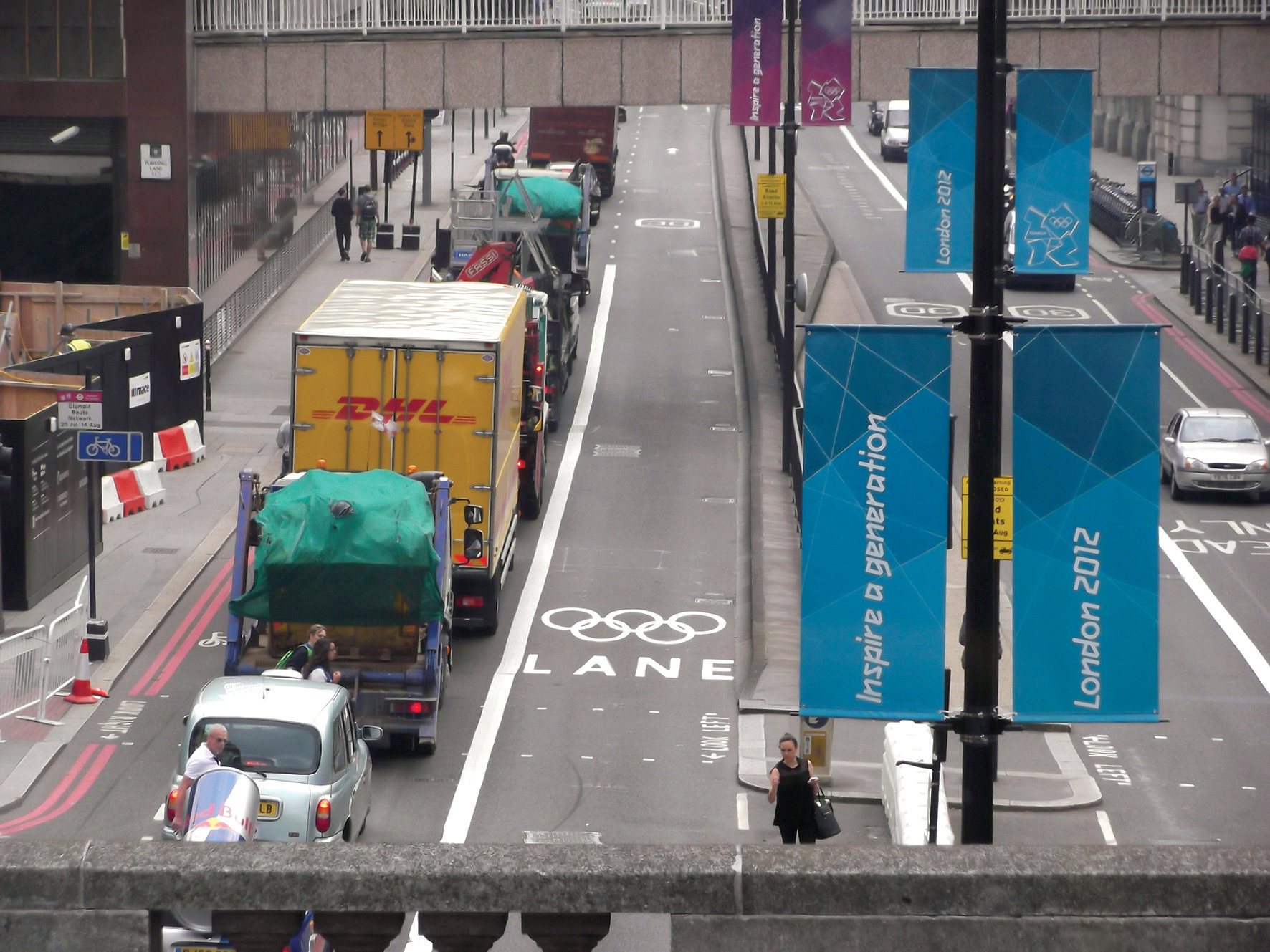David Crawford investigates a control centre with a future. Destined to play a central role in keeping the city and its transport running smoothly during the 2014 Commonwealth Games in July, the new Glasgow Operations Centre in Scotland’s largest urban centre formally went live earlier this year. The aim was to dry run its far-reaching integration of previously distinct core systems and familiarise the public with the initial phase of what will be a long-term post-event legacy. The centre brings together, i

Glasgow City Council leader Councillor Gordon Matheson in the new GOC
David Crawford investigates a control centre with a future.
Destined to play a central role in keeping the city and its transport running smoothly during the 2014 Commonwealth Games in July, the new Glasgow Operations Centre in Scotland’s largest urban centre formally went live earlier this year. The aim was to dry run its far-reaching integration of previously distinct core systems and familiarise the public with the initial phase of what will be a long-term post-event legacy.
The centre brings together, in a single, purpose-built location, the city’s traffic management services (Traffcom) camera network and Community Safety Glasgow crime and anti-social behaviour prevention array. The long-term value of this integration emerges from the results of surveys showing that 86% of the Traffcom cameras monitored areas that were not previously covered by Community Safety Glasgow.
At the same time, 32% of Community Safety Glasgow’s cameras were in locations where they could also be of value to traffic management. To replace outdated equipment, a rollout of over 400 digital cameras is currently under way.
With their systems now pooled, the two operations enjoy direct joint access to the city’s entire output of live and recorded CCTV footage. The operations centre has a total of around 1,000 screens and is a key deliverable of the city’s £24 million (US$40 million) Future City Glasgow demonstrator programme.
Glasgow’s new operations centre has two immediate, event-related tasks. The First is to deliver a central platform for active information sharing and incident response coordination, enabling transport providers to manage spectator movements without impacting on non-Games traffic.
The organisers stress that ‘Glasgow is a compact city’ and that the best way to reach a venue is by walking, cycling or using public transport and by using the Games website for travel planning. A key resource is the bus information and signalling system (provided by378 Cubic Transportation Systems) which manages eight quality bus corridors totalling 120km in the Greater Glasgow area.
The second task is to coordinate the real-time management of a Games road network to maintain journey times to and from the Games’ venues - most importantly for the 4,500 athletes. Competitors will travel between the new Athletes’ Village in the east of the city, training sites and events venues in coaches and minibuses.
Their journeys will be speeded up by the creation of a 20km-long network of dedicated lanes – labelled the core route network - where passenger bus-style traffic gets signal priority over general traffic. After the Games have finished, most of the core route network will become permanent priority bus lanes.
Glasgow City Council expects the new lanes to work smoothly with general traffic following an evaluation of Games-period experience and the resulting changes in traffic signal phasing. It is also anticipating reduced pressure on ‘pinch point’ junctions.
Masterminding the project and its procurement is the Access UK strategic information and communications technology partnership between the City Council and services Provider1676 Serco. Access UK retained consultants 5897 IBI Group to advise on the collocation of the two camera operations, the design of the operations centre and the migration of the existing CITRAC2 (Centrally Integrated Traffic Control) urban traffic control system. Addressing a November 2013 masterclass for the Institution of Civil Engineers, IBI director Graeme Scott cited one of the key challenges as “identifying duplication and so freeing up valuable resources to refocus on the front line.”
Glasgow’s operations centre represents the largest single integration of systems within the programme. Even before its competition success, the City Council had already allocated £5.3 million (US$8.9 million) for a basic collocated centre and, a spokesperson told ITS International, “this investment would have allowed for a fully functional facility had the TSB bid been unsuccessful.”
In the event, the allocation to the operations centre of 50% TSB funding has allowed a full-scale refresh of the existing legacy infrastructure on which it would otherwise have had to rely.
Key facets are:
The underlying technology necessary for this has just undergone a proof of concept process. It will continue to be developed, evaluated and eventually integrated into the operations centre, with complete functionality due by 2016.
The main gains in efficiency from the additional funding are:
By that time the development of the operations centre was already well advanced. The city’s major incident support team was able successfully to mobilise at, and operate from, the centre, for the duration of the incident.
In wider terms of crime-fighting, Glasgow Council leader Councillor Gordon Matheson sees a key benefit of the integration in reducing the need for police administrative staff to search CCTV footage manually for relevant evidence. This, he says, “is freeing them for other duties, and enabling faster incident detection and emergency services response.”
Via a smartphone app, Glaswegians will be able to report issues such as potholes and check the City Council’s response. Another planned service will monitor retail demand and footfall – with a dual purpose.
City planners will be able to watch movements in area-specific footfall and retail demand to see which parts of Glasgow are doing well and which need more support – for example in better traffic and pedestrian movement planning. It will also help people organise less stressful shopping trips by enabling them to identify the busiest and quietest places in the city.
An active travel demonstrator will focus on making the city more cyclist- and pedestrian-friendly. Currently, only 2% of journeys made into the city centre are by bicycle.
People who do cycle – or walk – will be able to use a smartphone app to pinpoint the routes they take most often and in doing so they will be contributing to a MapGlasgow website being developed as part of the demonstrator. The idea being explored is to let data drive investment so that resources can put to the best use. An integrated active travel journey planner will enable cyclists and walkers to use their smartphones to find the most direct, least traffic impacted and flattest route to their destination before setting off.
Again, all the facilities will remain in-place to help Glaswegians long after the Commonwealth Games have finished.
Destined to play a central role in keeping the city and its transport running smoothly during the 2014 Commonwealth Games in July, the new Glasgow Operations Centre in Scotland’s largest urban centre formally went live earlier this year. The aim was to dry run its far-reaching integration of previously distinct core systems and familiarise the public with the initial phase of what will be a long-term post-event legacy.
The centre brings together, in a single, purpose-built location, the city’s traffic management services (Traffcom) camera network and Community Safety Glasgow crime and anti-social behaviour prevention array. The long-term value of this integration emerges from the results of surveys showing that 86% of the Traffcom cameras monitored areas that were not previously covered by Community Safety Glasgow.
At the same time, 32% of Community Safety Glasgow’s cameras were in locations where they could also be of value to traffic management. To replace outdated equipment, a rollout of over 400 digital cameras is currently under way.
With their systems now pooled, the two operations enjoy direct joint access to the city’s entire output of live and recorded CCTV footage. The operations centre has a total of around 1,000 screens and is a key deliverable of the city’s £24 million (US$40 million) Future City Glasgow demonstrator programme.
Glasgow’s new operations centre has two immediate, event-related tasks. The First is to deliver a central platform for active information sharing and incident response coordination, enabling transport providers to manage spectator movements without impacting on non-Games traffic.
The organisers stress that ‘Glasgow is a compact city’ and that the best way to reach a venue is by walking, cycling or using public transport and by using the Games website for travel planning. A key resource is the bus information and signalling system (provided by
The second task is to coordinate the real-time management of a Games road network to maintain journey times to and from the Games’ venues - most importantly for the 4,500 athletes. Competitors will travel between the new Athletes’ Village in the east of the city, training sites and events venues in coaches and minibuses.
Their journeys will be speeded up by the creation of a 20km-long network of dedicated lanes – labelled the core route network - where passenger bus-style traffic gets signal priority over general traffic. After the Games have finished, most of the core route network will become permanent priority bus lanes.
Glasgow City Council expects the new lanes to work smoothly with general traffic following an evaluation of Games-period experience and the resulting changes in traffic signal phasing. It is also anticipating reduced pressure on ‘pinch point’ junctions.
Masterminding the project and its procurement is the Access UK strategic information and communications technology partnership between the City Council and services Provider
Strategic
Glasgow City Council won its Future City funding in January 2013, against 29 other metropolitan contestants, in a competition staged by UK Government innovation agency the Technology Strategy Board (TSB). The competition set out to find a demonstrator location to show how innovative a major city government could be in integrating its civic infrastructure, transport, communications and social frameworks to boost its economy and quality of life.Glasgow’s operations centre represents the largest single integration of systems within the programme. Even before its competition success, the City Council had already allocated £5.3 million (US$8.9 million) for a basic collocated centre and, a spokesperson told ITS International, “this investment would have allowed for a fully functional facility had the TSB bid been unsuccessful.”
In the event, the allocation to the operations centre of 50% TSB funding has allowed a full-scale refresh of the existing legacy infrastructure on which it would otherwise have had to rely.
Key facets are:
- An upgrade from analogue circuits and fibre systems to digital technology;
- A faster and more secure system for handling camera images and the more comprehensive recording, archiving and integration of the resulting data;
- More efficient systems to support wider and more secure data sharing among the project partners for the management of security-related incidents, including intelligence-based GIS event mapping to inform future crime prevention strategies; and
- The introduction of centrally-controlled video analytics technology to streamline the management of CCTV footage coming into the operations centre and – specifically - support crime prevention and detection.
The underlying technology necessary for this has just undergone a proof of concept process. It will continue to be developed, evaluated and eventually integrated into the operations centre, with complete functionality due by 2016.
The main gains in efficiency from the additional funding are:
- A common user interface which avoids users having to navigate their way through complex and disparate systems;
- The reality of all partners now having access to a single CCTV system across the city; and
- Improved work-flow management through a dedicated business process system.
By that time the development of the operations centre was already well advanced. The city’s major incident support team was able successfully to mobilise at, and operate from, the centre, for the duration of the incident.
In wider terms of crime-fighting, Glasgow Council leader Councillor Gordon Matheson sees a key benefit of the integration in reducing the need for police administrative staff to search CCTV footage manually for relevant evidence. This, he says, “is freeing them for other duties, and enabling faster incident detection and emergency services response.”
Demonstrator benefits
Among other facets of the operations centre-anchored demonstrator is a one-stop-shop city dashboard, which members of the public will be able to create and customise for their smartphones, tablets and desk computers. Users will have scope to monitor and download information from city systems on the status of traffic lights and CCTV coverage, air quality levels, public transport waiting times (as part of city-wide journey planning), weather conditions and flood warnings.Via a smartphone app, Glaswegians will be able to report issues such as potholes and check the City Council’s response. Another planned service will monitor retail demand and footfall – with a dual purpose.
City planners will be able to watch movements in area-specific footfall and retail demand to see which parts of Glasgow are doing well and which need more support – for example in better traffic and pedestrian movement planning. It will also help people organise less stressful shopping trips by enabling them to identify the busiest and quietest places in the city.
An active travel demonstrator will focus on making the city more cyclist- and pedestrian-friendly. Currently, only 2% of journeys made into the city centre are by bicycle.
People who do cycle – or walk – will be able to use a smartphone app to pinpoint the routes they take most often and in doing so they will be contributing to a MapGlasgow website being developed as part of the demonstrator. The idea being explored is to let data drive investment so that resources can put to the best use. An integrated active travel journey planner will enable cyclists and walkers to use their smartphones to find the most direct, least traffic impacted and flattest route to their destination before setting off.
Again, all the facilities will remain in-place to help Glaswegians long after the Commonwealth Games have finished.










